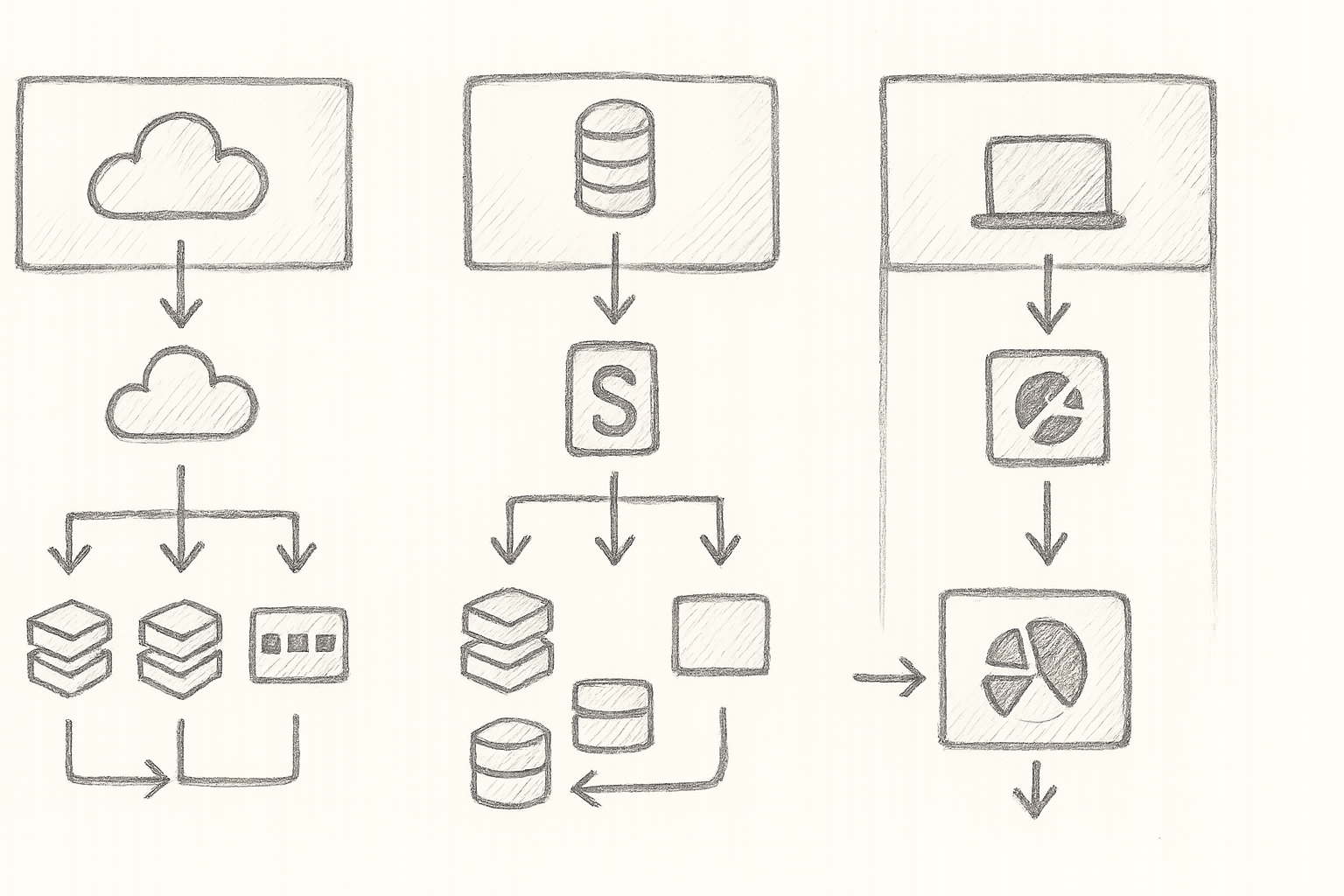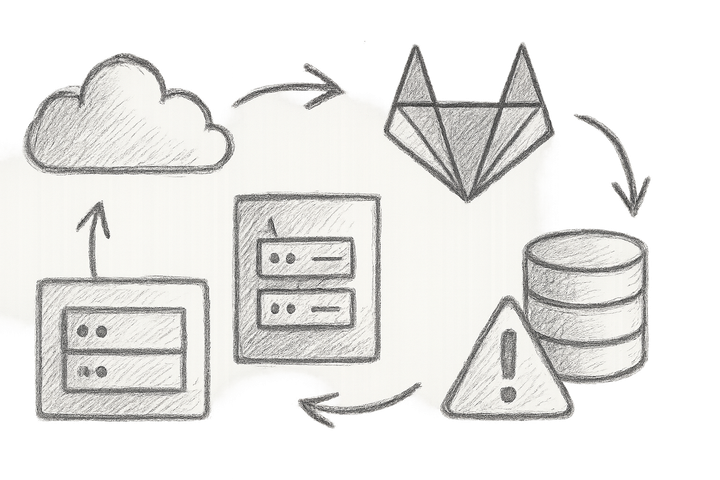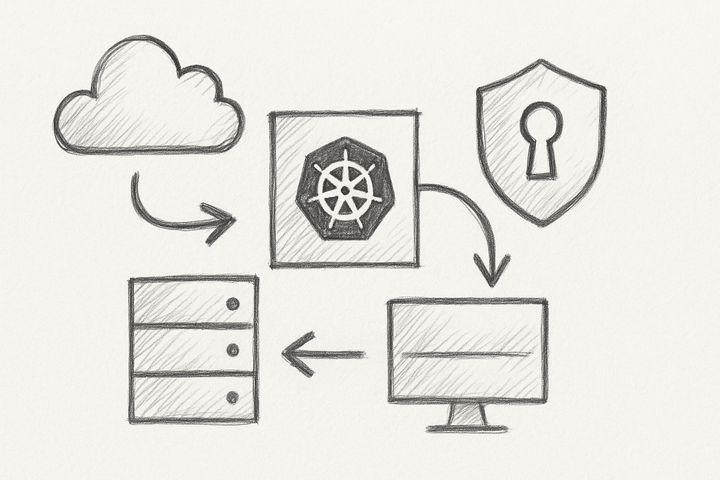Specialized SIEM and Log Analysis Tools Uncovered: Practical MozDef vs Sagan vs HELK Platform Review for Real-World DevOps Impact

Hook-Driven Summary
What if your SIEM tool doesn't just add noise but actually helps you kill it? For those of us slogging through the trenches of DevOps security, choosing the right SIEM or log analysis platform often feels like tiptoeing through a minefield — half the tools are too complex to wrestle, the rest sluggish beasts that choke under real-world pressure or just don’t gel with your ops realities.
Enter MozDef, Sagan, and HELK: three specialised platforms that approach event management and threat hunting from wildly different angles. After more bruising than I care to admit in production incidents, here’s the cold, hard truth – the difference isn’t flashy features, but which tool survives your environment’s chaotic demands. This no-nonsense, battle-tested guide will save you sleepless nights and an ocean of wasted time.
1. Introduction: The SIEM Selection Quagmire for DevOps
Ever felt like selecting a SIEM is less picking a tool and more surviving an epic rollercoaster with missing safety harnesses? It’s the black hole where DevOps meets security, and one wrong move can trigger cascading integration disasters, maintenance nightmares, or worst of all — invisible security gaps.
The dream tool isn’t just a log processor crunching millions of events; it hunts attackers, automates incident handling, and stands firm when your infrastructure teeters on the edge. From harrowing team experiences, I’ve seen groups drown in overcomplexity or settle for anaemic setups that miss the real threats skulking in the shadows. This article cuts brutally through the marketing fluff to expose the raw realities behind MozDef, Sagan, and HELK — forged from hands-on deployments and more production scars than I’d care to tally.
Before we plunge in, if you’re after a wider perspective on log management’s nuts and bolts, check this out: Enterprise Log Management Platforms Unlocked: In-Depth Graylog vs ELK Stack Battle-Tested Comparison. You’ll thank me later.
2. Overview of the Players: Design Philosophy & Core Architecture
MozDef: The Incident Automation Heavyweight
Mozilla’s MozDef is an open-source SIEM built for serious pyrotechnics — automating incident workflows using a mash-up of Python and the Elastic Stack. It’s battle-hardened to swallow 300 million events daily in production, according to Mozilla’s reports from peak operation times MozDef GitHub (Deprecated). Features? Real-time alerting, a sleek incident dashboard, plus RESTful APIs primed for orchestration automation. Sounds dreamy, right? Well, brace yourself: the project’s been deprecated as of latest updates in 2024 — a grim reminder that even heavyweight tech stumbles when threats evolve and dependencies fight back.
Sagan: Lightweight, Snort-Compatible Log Analysis
Meet Sagan — the lean, hungry log analyser engineered for speedy real-time event handling. Compatible with Snort IDS rules, it’s resource-friendly and perfect where overhead is the enemy — think embedded monitoring or bolting onto existing IDS setups Sagan GitHub. Don’t expect incident management dashboards or incident orchestration here; Sagan’s about quick parsing and sharp alerting without the baggage.
HELK: Hunting ELK for Deep Threat Analysis
If MozDef is heavyweight and Sagan is sprinter, HELK is the triathlete with data science gear. Built on the Elastic Stack cocktail — Elasticsearch, Logstash, Kibana — plus Kafka and Jupyter notebooks, HELK supercharges advanced threat hunting with interactive analytics and collaborative hunting pipelines Elastic Stack Documentation. For SOCs craving rich context and machine intelligence, it’s a revelation — if your team’s got the juice to wrestle with complex deployments and data science adjacencies.

3. Deployment Complexity & Environment Suitability
Here’s a "wait, what?" moment: complexity kills adoption faster than bad coffee on Monday mornings.
MozDef’s Python and Elastic stew demands solid expertise — juggling dependency hell and Elastic version quirks is a daily grind, especially now the project’s deprecated. Containerisation is feasible but hardly a click-and-go affair.
Sagan shines for simplicity — a barebones setup with a basic config file and syslog input, perfect for smaller infrastructures or those craving low latency. Toss in Snort rule integration, and you’re off like a hare. But don’t expect shiny dashboards or bells and whistles out of the box (spoiler: you won’t find them).
HELK, on the other hand, is a beast — coordinating multiple containers or VMs running Elasticsearch clusters, Kafka brokers, Logstash pipelines, plus Jupyter and Kibana. Not for teams lacking solid data engineering chops. If your SOC is mature and hungry for hunting power, it’s a powerful ally—but there’s sweat equity involved.
4. Performance Characteristics & Scalability Considerations
MozDef has the street cred from Mozilla’s production workloads — handling 300+ million daily events with grace and deterministic incident triage via REST API automation MozDef GitHub. The catch? Without active community upkeep, Elastic Stack version mismatches and Python dependency snafus can trip you up faster than a toddler on rollerblades.
Then there’s Sagan: a single-threaded, low-memory design that keeps CPU consumption modest but falters with big data volumes or distributed correlation complexity Sagan GitHub. Scaling is horizontal but basically offloaded — meaning you might find yourself chasing complementary solutions to keep pace.
Now, if there’s one system that screams “big data rockstar,” it’s HELK. Performance hinges on your Elasticsearch cluster’s health, Kafka throughput, and Logstash pipeline tuning Elastic Stack documentation. Invest in cluster sizing, node balancing, and storage optimisation, and you get near-magical search speeds over petabytes of data. The trade-off? Infrastructure costs that could fund a small country’s coffee supplies.
5. Feature Trade-Offs & Practical Use Cases
- Automation: MozDef is top dog with workflow automation — auto-ticketing, alert prioritisation, and API integrations enabling orchestration. Sagan? It leaves you the hard yards on incident management. HELK’s notebooks empower sophisticated hunting, but require hands-on, savvy analysts.
- Real-Time Detection: Sagan sprints to the finish line with immediate rule-based alerts closely tied to Snort’s capabilities. MozDef balances rapid alerting with incident automation. HELK plays the long chess game—detecting elusive stealth patterns through complex analytics.
- Customisation: MozDef offers APIs and playbooks for automation and orchestration developers. Sagan benefits from Snort rule compatibility, letting you recycle IDS rules effectively. HELK’s Jupyter notebooks enable bespoke analytic pipelines but welcome newcomers to a steep learning curve.
- Organisation Fit:
- MozDef suits medium to large teams craving automation with dedicated incident handlers.
- Sagan fits lightweight or edge environments prioritising fast detection with a minimalist footprint.
- HELK is custom-made for SOCs with data scientists and threat hunters chasing advanced analytics.
6. Integration & Automation: Bringing SIEM Into Your DevOps Pipeline
In the DevOps world, automation isn’t optional — it's king. MozDef’s REST APIs let you enmesh SIEM controls within your CI/CD pipelines and SOAR workflows — effectively closing the loop between detection and remediation. Incident collaboration features can shave hours off manual toil, if you can get the stack humming properly.
Sagan keeps things minimalistic: install it alongside IDS tools like Snort or Suricata, use syslog forwarding, and tune rules for lightweight device monitoring or microservices. Its error handling is simple—stick to proper log formats and validate your rules, or expect unpredictable results reminiscent of my first disastrous homebrew fire alarm setup (don’t ask).
HELK’s Elastic roots offer potent ingestion through Logstash’s pipeline plugins, and Kibana dashboards make visual triage a walk in the park. Its API integration plays nicely, but planning scaling and upgrades is a must unless you enjoy firefighting under load.
For extending threat detection beyond logs, consider our primer on Decoding Network Security Monitoring: Zeek, pfSense, and Security Onion for DevOps. It’s a neat complement you’ll want in your toolkit.
7. The "Aha Moment": Reframing SIEM Selection as Context-Specific Optimisation
Here’s the harsh truth: no SIEM plays hero in every scenario. Want automation galore? Brace yourself for MozDef’s operational overhead — it’s not a set-and-forget. Need nimble detection with minimum fuss? Sagan quietly does its job and disappears into the logs. Hunting elusive threats? HELK hands you a lightsaber—but you’d better be ready for the training montage.
SIEM choice is less about ticking shiny boxes and more about brutal trade-offs between complexity, performance, and your team’s wizardry level. I’m convinced the real key is iterative deployment and ruthless adaption — anything else is wishful thinking.
8. Future-Proofing: Emerging Trends & Innovation in SIEM and Threat Hunting
Don’t blink — the SIEM scene is sprinting towards AI-driven alert triage and behaviour anomaly detection aimed at slashing alert fatigue. HELK’s notebooks are already flirting with machine learning models for this Elastic Security blog.
Cloud-native and containerised SIEM deployments promise less pain and elastic scale—MozDef’s monolith architecture shows its age there. Sagan’s lightweight footprint? That’s how we keep eyes on the edge in a hyper-distributed world.
Open standards like RESTful APIs and Elastic interoperability continue to unlock integration and team collaboration. Threat hunting goes interactive and algorithms get more nuanced. HELK’s shared notebooks hint at a future where analysts don’t hunt alone.
9. Conclusion: Recommended Next Steps & Measurable Outcomes
If you’re dipping toes in the SIEM waters:
- Start Simple: Deploy Sagan alongside your current IDS. It’s a quick win for real-time log analysis without the drama.
- Automate Workflows: Try MozDef’s playbooks if your team has the appetite and staff to wrestle its stack. Prepare for some elbow grease.
- Go Deep: Invest in HELK if your SOC is battle-ready to harness Elastic’s full hunting and analytics potential.
Measure your progress by:
- Tangible reductions in false positives and alert noise.
- Improvements in mean time to detect (MTTD) and mean time to respond (MTTR).
- The operational overhead required to maintain and tune your SIEM.
Treat this as a journey, not a race—deploy modularly, learn from your environment’s chaos, and keep evolving as both your team and the threats mature.
References
- MozDef GitHub Repository (Deprecated)
- Sagan Log Analysis Engine
- Elastic Stack Official Documentation
- The DevOps Code Quality and Security Quagmire
- Intelligent Incident Management
- High-Performance Network IDS Showdown: Suricata vs Snort
- Modern Observability Stack Demystified
- Elastic Security AI Edition Announcement
Internal Cross-Links
- Enterprise Log Management Platforms Unlocked: In-Depth Graylog vs ELK Stack Battle-Tested Comparison for Reliable, Scalable, and Cost-Effective Operations
- Decoding Network Security Monitoring: A Pragmatic Comparison of Zeek, pfSense, and Security Onion for DevOps
Code Snippet: MozDef Incident Creation via REST API (Python Example)
import requests
API_BASE = "https://your-mozdef-api.example.com/api"
API_TOKEN = "your_api_token_here"
HEADERS = {
"Authorization": f"Bearer {API_TOKEN}",
"Content-Type": "application/json"
}
def create_incident(title, description, severity):
payload = {
"title": title,
"description": description,
"severity": severity
}
try:
response = requests.post(f"{API_BASE}/incidents/", json=payload, headers=HEADERS)
response.raise_for_status()
except requests.exceptions.HTTPError as http_err:
print(f"HTTP error occurred: {http_err} - {response.text}")
return None
except requests.exceptions.RequestException as err:
print(f"Request error occurred: {err}")
return None
else:
print("Incident created successfully!")
return response.json()
if __name__ == "__main__":
incident = create_incident("Test Incident", "This is a test incident from API", "High")
Note: Error handling checks HTTP response status, prints friendly error messages and covers network issues. For production, consider adding retries with exponential backoff, integrating logging frameworks, and storing tokens securely (e.g. environment variables or vault solutions).
Final Words
I’ve been slammed by all three tools during production chaos. MozDef’s elegant automation could have been the killer app — if only it was still maintained. Sagan’s featherweight profile keeps log analysis nimble yet limited in scope. HELK’s Elastic Stack power demands serious engineering dedication, but rewards you with hunting capabilities that border on sorcery.
Choose what fits your chaos, culture, and courage. And whatever you pick—keep iterating. Because in security, the only constants are change and pain.
May your alerts be few and your uptime long.
Cheers,
Your battle-scarred DevOps storyteller



